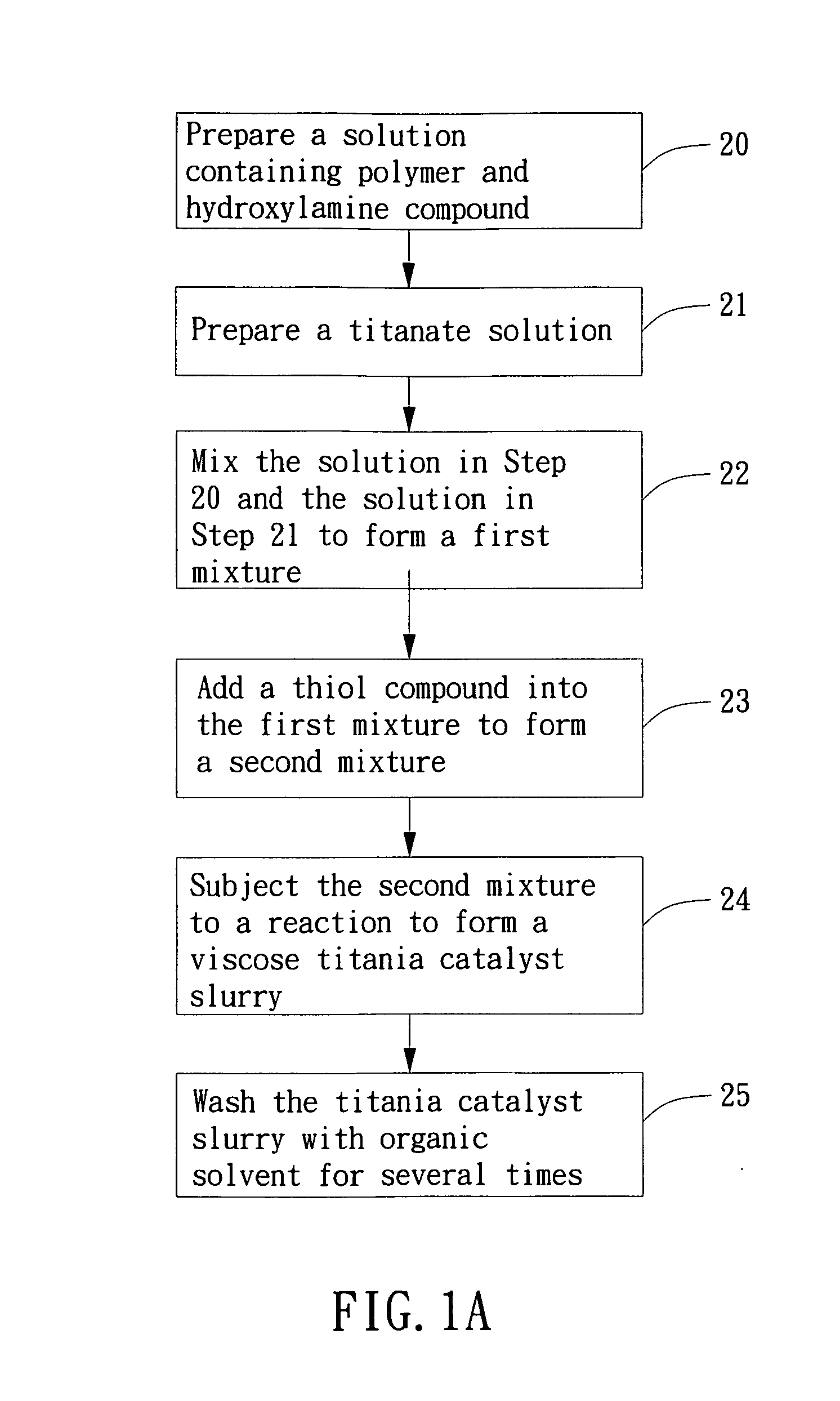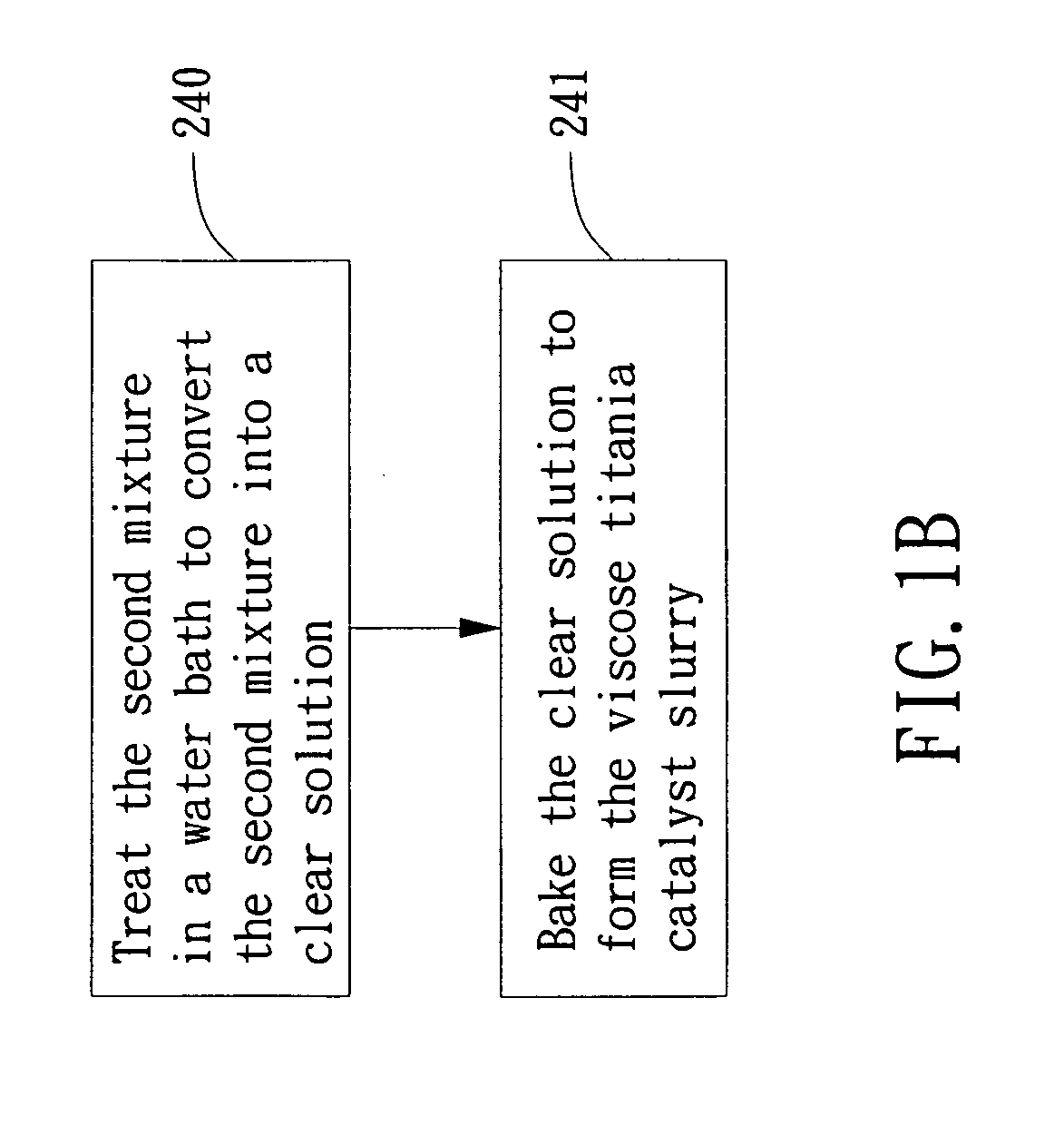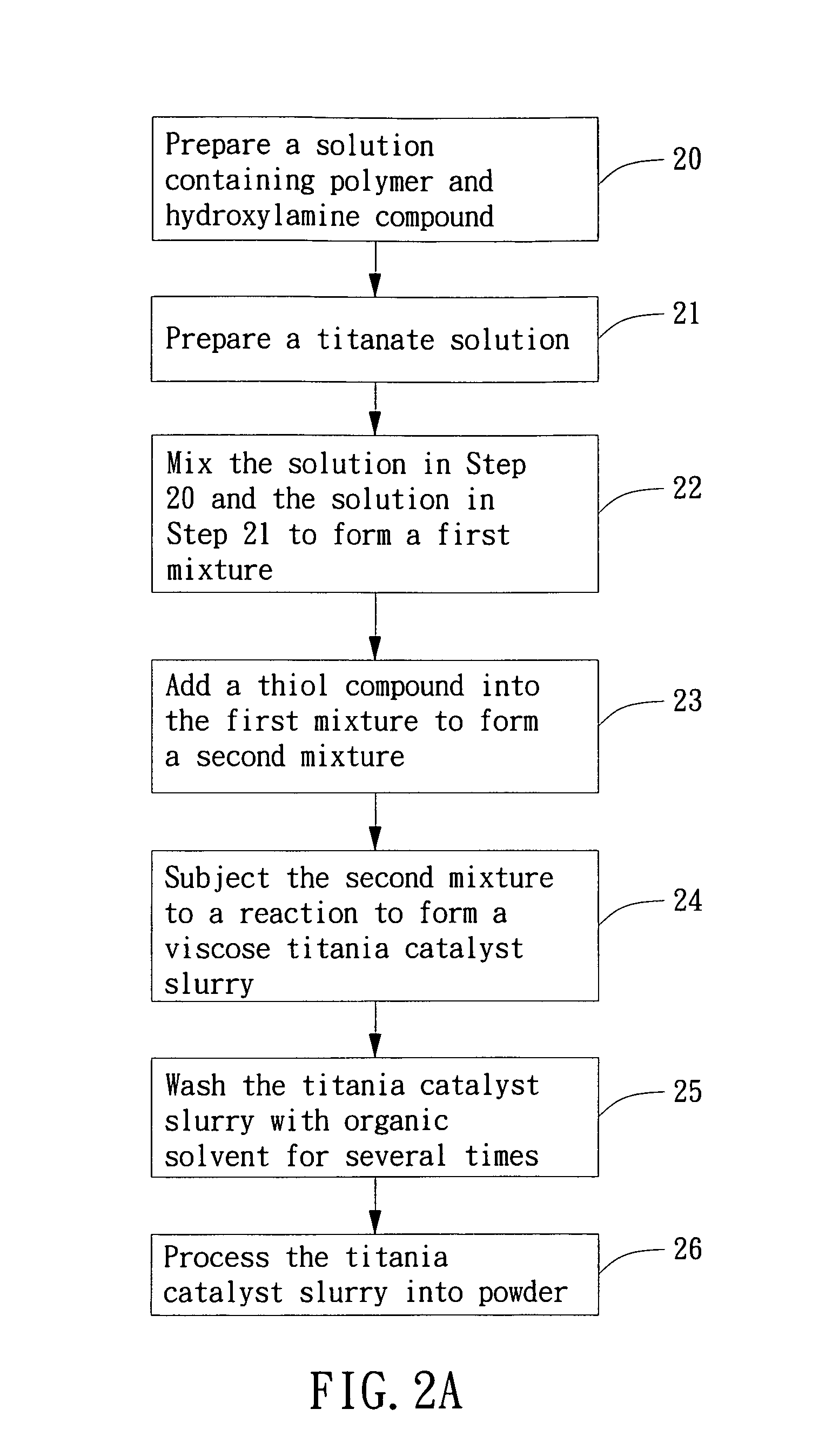Method for producing catalyst for wastewater treatment
a wastewater treatment and catalyst technology, applied in catalyst activation/preparation, titanium compounds, physical/chemical process catalysts, etc., can solve the problems of difficult to treat high-concentration contaminates, long treatment time for bio-treatment, and difficult separation of nanometer titania powder from the aqueous system after treatment, etc., to improve hydrolysis-condensation efficiency, shorten synthesis time, and high porosity
- Summary
- Abstract
- Description
- Claims
- Application Information
AI Technical Summary
Benefits of technology
Problems solved by technology
Method used
Image
Examples
example 1
[0029]2.2 Grams of hydroxyamines such as hydroxylamine hydrochloride were dissolved in distilled water completely and 1 gram polymer such as polyvinylpyrrolidone was added into the hydroxylamine solution and stirred to dissolve the polymer completely. Then distilled water was added to make the volume to be 100 ml. 10 ml tetra-isopropyl orthotitanate and 3.5 ml were mixed and added into 85 ml of the hydrxyamine hydrochoride / polyvinylpyrrolidine solution. After stirring, 0.5 ml thiol compound such as 1-thioglycerol was added therein and stirred for 30 minutes. The resultant solution was placed in a water bath at a constant temperature of 40° C. for 24 hours. The resultant solution was transferred into a 100 ml sealable flask and the flask was sealed and placed into an oven at a temperature of 80° C. for 2-6 days, preferably for 3-4 days. Then the flask was taken out from the oven and cooled to room temperature, in that time, the solution contained in the flask was converted into white...
example 2
[0032]The titania slurry prepared from Example 1 was washed with isopropanol to remove un-reacted substances and dried in air (or in an oven at a temperature of 40 to 80° C.). After drying, the titania was placed in a mortar to be ground into powder. Then the ground powder was placed in a furnace at a temperature of 400° C. and calcined for 2 hours and cooled to room temperature. The average particle size of the titania powder was measured as from 50 to 250 nm. 0.05 g of the titania powder was added with 50 ml of 0.2M aqueous potassium iodide (KI) solution and shaken by ultra sonicator in dark for 5 minutes to disperse the titania powder in the aqueous solution evenly. At that time, the resultant titania dispersion was sampled and measured the concentration as a standard concentration before reaction. The titania dispersion was stirred for 5 minutes and then subjected to photo-chemical reaction by irradiating with mercury lamp at a light power of 500 W in a distance of 11 cm above t...
example 3
Preparation of Nanometer Titania Catalyst Film
[0037]The titania catalyst slurry prepared from Example 1 was coated on a FTO conductive glass substrate with a doctor coating method and then the substrate was placed in room temperature and dried in the air for at least 3 to 8 hours, preferable 5 hours. The substrate was then placed into a furnace at a temperature of 450˜500° C. for 0.5 to 1 hour and then cooled to room temperature to form a fine transparent titania film on the FTO conductive glass substrate. The titania film exhibited excellent adhesion to the substrate and the titania film had a thickness of from 1 to 5 μm, preferably 2 to 3 μm. In this embodiment, the polymer could be, for example, polyethylene oxide, polyacrylonitrile, polyvinyl alcohol, polyvinylpyrrolidone, polyvinyl acetate, carboxymethyl cellulose, polyethylene glycol, and the like. Moreover, in this embodiment, the hydroxylamine compound could also include laurylamine hydrochloride (LAHC) in addition to hydrox...
PUM
| Property | Measurement | Unit |
|---|---|---|
| band gap | aaaaa | aaaaa |
| volume | aaaaa | aaaaa |
| temperature | aaaaa | aaaaa |
Abstract
Description
Claims
Application Information
 Login to View More
Login to View More - R&D
- Intellectual Property
- Life Sciences
- Materials
- Tech Scout
- Unparalleled Data Quality
- Higher Quality Content
- 60% Fewer Hallucinations
Browse by: Latest US Patents, China's latest patents, Technical Efficacy Thesaurus, Application Domain, Technology Topic, Popular Technical Reports.
© 2025 PatSnap. All rights reserved.Legal|Privacy policy|Modern Slavery Act Transparency Statement|Sitemap|About US| Contact US: help@patsnap.com



